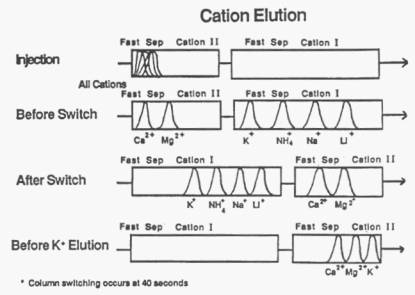Dionex 4000i
| Objektnummer | B00008238 |
|---|---|
| Seriennummer | 008238 |
| Object Naam | Dionex 4000i |
| Status | Stock unit |
Product groep: Ionchromatografie
Status, leverings- en betalingsvoorwaarden
Apparatuurcontrole
De gebruikte apparatuur wordt voorafgaand aan levering gecontroleerd door Labexchange Service GmbH. U ontvangt volledig functionerende apparatuur.
Verzending
De vermelde verzendtijden zijn telkens de kortste voor een artikel. In bepaalde gevallen kunnen de daadwerkelijke verzendtijden daarvan afwijken. De uiteindelijke verzendtijden worden aangegeven in de opdrachtbevestiging.
In de regel bieden we combinatieleveringen aan. Levertijden zijn afhankelijk van het artikel met de langste levertijd. Deelleveringen zijn mogelijk tegen een toeslag.
Verzendmethoden
Koeriersdiensten, transportbedrijven, zelf afhalen, levering door Labexchange wagenpark
Informatie levering
De prijzen zijn exclusief verzendkosten. De genoemde verzendkosten zijn de te verwachten kosten. Afwijkingen zijn mogelijk. In het geval geen kosten voor verzending zijn gespecificeerd, vraag die dan afzonderlijk aan.
De opgegeven vracht- en verpakkingskosten hebben betrekking op de goedkoopste transportroute en zijn onder voorbehoud van onvoorziene kostenstijgingen. Door onvoorziene gebeurtenissen kunnen vrachttarieven en levertijden op elk moment veranderen en moeten ze worden aangepast aan de huidige situatie. Incoterm coderingen volgens Incoterms 2010: Bij afhalen EXW, CFR voor zendingen over zee, CPT per luchtfracht, andere zendingen DAP. Opmerking: We geven geen preferentieel certificaat/EUR1 af. Bij zelf afhalen/af fabriek (EXW) uit derde landen en de EU wordt 16% btw als borg ingehouden, tot we de ontvangstbevestiging/het leveringscertificaat van de koper hebben ontvangen.
Betalingsvoorwaarden
Wij accepteren geen betalingen Letter of Credit, PayPal etc. Het factuurbedrag is volledig verschuldigd. Er zijn geen betalingskortingen. De goederen blijven tot volledige betaling ons eigendom.
|
Land |
Mogelijke betaalmethoden |
Opmerking |
|
Duitsland, Oostenrijk, Zwitserland |
Betaling via factuur, vooruitbetaling, per creditkaart |
Betaling via factuur is mogelijk voor ondernemingsklanten. |
|
Nederland, België en Luxemburg |
Betaling via factuur, vooruitbetaling, per creditkaart |
Betaling via factuur is mogelijk voor ondernemingsklanten. |
|
Andere landen |
vooruitbetaling, per creditkaart |
|
Onze Algemene Voorwaarden voor Verkoop, Levering en Betaling zijn hierop van toepassing. Deze voorwaarden zijn hier te downloaden.
Tussenverkoop is ons voorbehouden.
Beschrijving status:
Alle artikelen zijn gebruikte artikelen, tenzij bij een artikel uitdrukkelijk wordt vermeld dat het om een nieuw apparaat gaat.
General Operating Instructions
The Fast Sep Cation II is used with the Fast Sep Cation I in the Column Switching Mode to obtain the fastest possible results for the simultaneous analysis of both alkali and alkaline earth metals under isocratic eluant conditions. Figure 3-1 is a representation of the separation scheme.

Fig. 3-1 Representation of an Analysis Using Column Switching between the Fast Sep Cation I and II columns
When the sample is injected, the column switching valve should be in the OFF position: the eluant flows first through the Fast Sep Cation II column and then through the Cation I column. The divalent cations in the sample will be retained by the Cation Il column, while the monovalent cations are essentially unretained by this column and move to the Cation I column where they are separated.
At 40 seconds (0.6 min.) after injection the valve is switched ON. The eluant now flows first through the cation I column and then through the Cation II column. This prevents the divalent cations in the sample from going through the Cation I column, providing rapid divalent cations separation by the Cation II column.
If you have a Gradient Pump Module (GPM), you can control the injection valve and the column switching valve automatically through GPM valves 5 and 6, respectively. The program would be as follows:
|
TIME (minutes) |
VALVE 5 (Injection Valve) |
VALVE 6 (Column Switching Valve) |
|
0 |
ON |
OFF |
|
0.6 |
ON |
ON |
|
7.5* |
OFF |
OFF |
* this time depends on the type of the analysis
GENERAL OPERATING CONDITIONS
Eluant components: HCI and 2,3-diaminopropionic acid monohydrochloride (DAP.HCI) Eluant flow rate: 2.0 mL/minute
Regenerant: 0.1 M tetrabutylammoniumhydroxide (TBAOH)
Regenerant flow rate: greater or equal to 5 mL/minute
Detector Range: 10 µS full scale or as required
Sample loop: 50 µL (or as required)
CHEMICALS REQUIRED
It is very important for the eluant to be as free of metalic impurities as possible. Thus, chemicals and water used should be of the greatest available purity.
Only use concentrated HCI, Ultrex grade or Baker Instra-Analyzed for Trace Metals.
Use DL-2,3-Diaminopropionic acid monohydrochloride (DAP.HCI) from Fluka Chemical Corporation ONLY
Use Dionex Tetrabutylammonium hydroxide (TBAOH), 0.1 M (P/N 39602)
Use deionized water, 18 MOhm or better.
SYSTEM REQUIREMENTS
The Anion MicroMembrane Suppressor (AMMS-1) is designed to be run on a Series 2000i or 4000i Ion Chromatograph (IC) equipped with an anion exchange column set and a Conductivity Detector Module (CDM). The Anion MicroMembrane Suppressor (AMMS-1) is installed immediately after the analytical column and before the conductivity detector in the column compartment of the chromatography module.
INTRODUCTION TO ANION ANALYSIS ELUENT SUPPRESSION
The Anion MicroMembrane Suppressors, AMMS-II and AMMS (2mm) provide high capacity suppression while adding a minimum of dead volume to the analytical system. The AMMS (2mm) is specially designed to be used with 2mm ion chromatography columns and is only compatible with 2mm chromatography systems. Its equivalent suppression capacity is greater than the suppression capacity achieved in the Anion MicroMembrane Suppressor used with 4mm ion chromatography column systems (AMMS-11). The ability of the AMMS-II and AMMS (2mm), to provide continuous suppression of traditional eluents, as well as eluents as concentrated as 0.1 M NaOH, significantly expands the capabilities of anion exchange ion chromatography.







